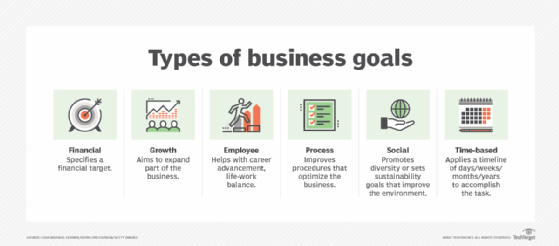performance and accountability reporting (PAR)
What is performance and accountability reporting (PAR)?
Performance and accountability reporting (PAR) is the process of compiling and documenting factors that quantify an organization's achievements, efficiency and adherence to budget, comparing actual results against previously articulated goals. The PAR process is usually carried out once per fiscal year, although in some cases it is done more often.
A comprehensive PAR document provides an overview of an organization's mission, planning process and internal structure and the strategies implemented to achieve desired goals. For each of these strategies, the document also assesses the degree of success the organization had in meeting its targets. In addition, the report details how performance and financial information are handled to ensure accuracy and completeness.
The PAR process might result in two separate documents -- one performance report and one financial report -- or, as is often the case, a single document that analyzes both performance and accountability. The document is often called a performance and accountability report, and referred to by the acronym PAR. As a result, PAR can refer to an actual report or to the process of generating such a report.

Performance and accountability reporting in government agencies
PAR documentation is especially favored by government agencies, which often must publish comprehensive performance and financial reports on a regular basis to fulfill their duty of public integrity. Most of these reports are accessible to the public online. For example, the following government agencies have made their reports available on their websites:
- Federal Mediation and Conciliation Service
- Government Accountability Office (GAO)
- Marine Mammal Commission (MMC)
- U.S. Access Board
- U.S. Agency for Global Media (USAGM)
- U.S. Commission on Civil Rights (USCCR)
The reports all provide a record of performance and accountability, but there is no industry standard around length and level of detail; as a result, the depth and breadth of the content varies significantly from one organization to another. For example, the MMC's fiscal year 2021 report is 15 pages and focuses primarily on the commission's strategic objectives. It includes little financial information because the commission has none of its own financial management systems. Instead, the U.S. Department of Agriculture External Services Branch maintains the MMC's financial management systems.
In contrast, the USAGM report for the same fiscal year is 230 pages. Of that, 47 pages are dedicated to financial information, including a message from the agency's chief financial officer and an independent auditor's report. The USAGM document also contains 140 pages of details about the organization's objectives and how well the agency performed in meeting those objectives. As part of this, the report compares current achievements with those over the past several years.
Because PAR documents are often publicly available and must undergo scrutiny by other organizations and individuals, they routinely include information about how data contained in the report has been verified and validated -- although the level of detail provided can vary significantly between different organizations, just like other aspects of the reports.
For example, the USCCR's report for fiscal year 2021 includes a short discussion on how the organization identifies, verifies and validates the sources of data used to measure performance. Meanwhile, the GAO's report for the same year contains an entire appendix dedicated solely to describing how performance data is verified and validated.

Is there a performance and accountability reporting standard?
There are no rules that govern how much information a PAR document should contain, how it should be formatted or how details should be presented.
Some reports are text-heavy and formal in tone, perhaps with one or two tables to present important data. Other reports, however, strike a more consumer-friendly approach -- incorporating many images, graphs, sidebars, callouts or other graphics -- and look more like a sales brochure than an official government document.
Regardless of how the information is presented, a PAR document must still communicate information about an organization's financial performance and accountability about meeting strategic objectives to be deemed credible.
See also: implementing enterprise risk management frameworks, compliance audit, budgeting planning and forecasting, data governance, regulatory compliance.







